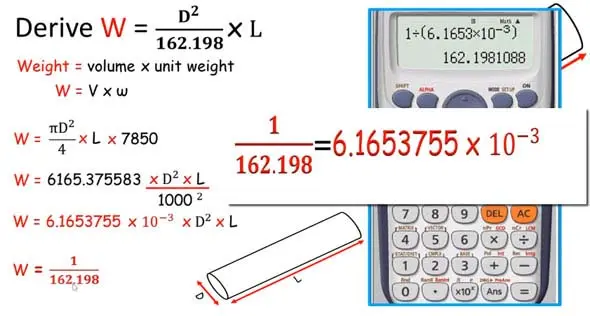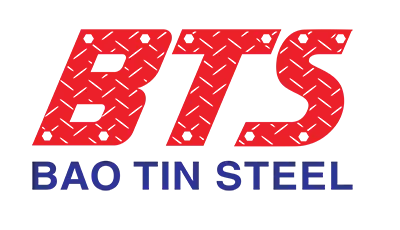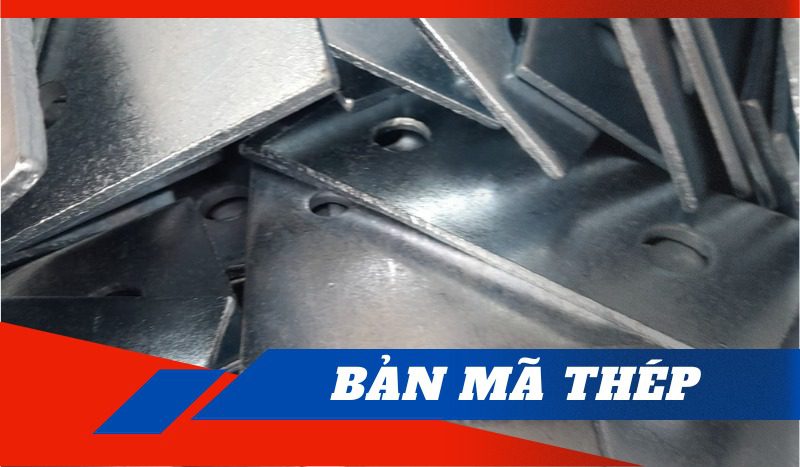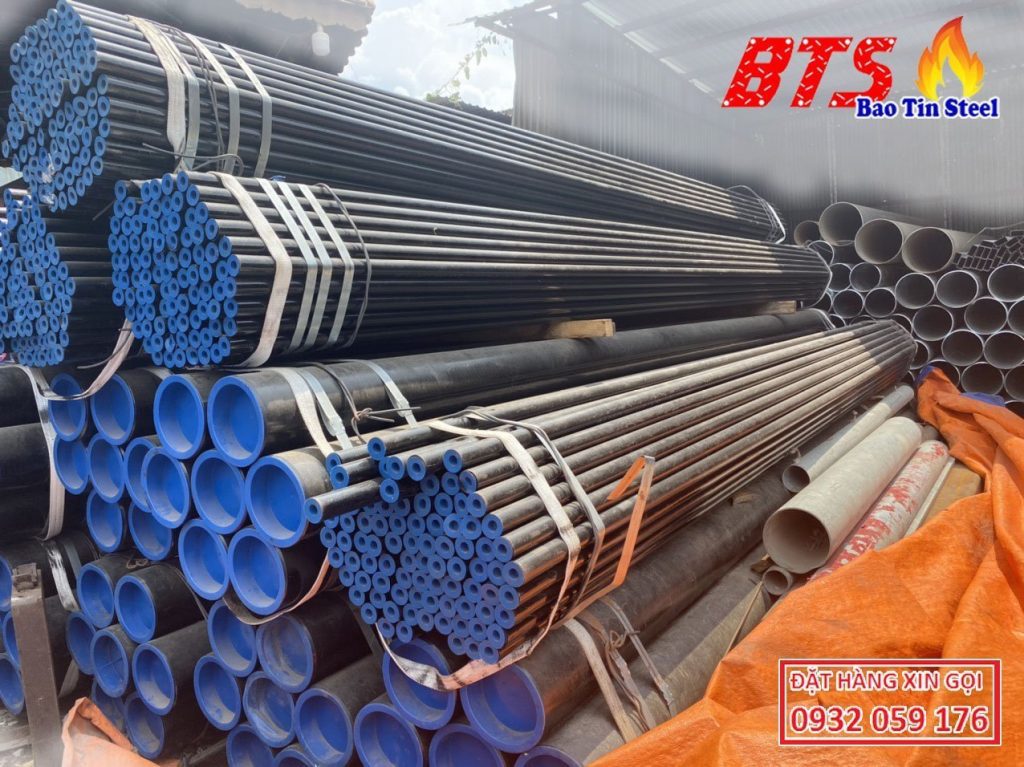
To calculate the weight of a steel plate, you need to answer a few questions as follows.
First, what kind of steel are you working with? One of the most important variables in any weight calculation for a steel plate is density. When calculating the weight of a steel plate, you typically have a group of steel plates divided into four categories in terms of their densities: carbon steel and stainless steel, series 300 and series 400.
Second, you will need to know the dimensions of the steel plate, including length (L), width (W) and thickness (T). If you multiply the length, width and thickness of the sheet, you get the result of the volume.
Table of Contents
Why need steel weight calculator?
Whether it is steel, stainless steel, aluminum or brass material, Bao Tin Steel’s metal weight calculator can accurately estimate the overall load size of your metal order. Our metal weight calculators allow customers to accurately predetermine the load capacity of their materials, eliminating guesswork and providing significant time and cost savings.
Our metal weight formula determines the estimated weight for the following steel, stainless steel, aluminum and copper shapes:
- Plate
- Tube
- Bar
- Circle
- Square
Characteristics of steel
High Tensile Strength: The high tensile strength provided by steel products and especially reinforcement makes it ideal for strengthening concrete structures. Reinforced concrete structures will provide a material with higher tensile strength that will not break easily under high tension as experienced in large structures.
High compressive strength: Steel, like concrete, withstands the high compressive forces present in larger constructions. Together, steel and concrete make the perfect material to secure long-lasting structures like buildings, bridges and more.
Difficult to mold and form: Steel is not as easy to mold and shape as fresh concrete, but can be molded and shaped under extreme heat. This makes forming and bending more complicated, but still doable. Steeledale Vaal can cut and bend rebar (rebar and mesh) on site, partially on site or completely in our yard.
Relatively expensive: Although steel is relatively expensive, it is 100% recyclable and will not waste materials.
What is steel?
Steel is a metal alloy with iron as the main element and carbon as its main alloying element. Even with only about 0.05% to slightly over 2% of the total weight of steel, carbon can already make iron harder and more malleable. The more carbon that is added to the iron, the harder the steel. Adding other alloying elements produces four main types of steel – carbon steel, alloy steel, stainless steel, and tool steel.
- Carbon steel is the most basic steel because it usually has only iron and carbon. In some cases, carbon steel may still have some elements, but only these elements: copper, manganese and silicon.
- Adding other alloying elements in carbon steel leads to our next type of steel, alloy steel. With other alloying elements such as manganese (to add hardness to the surface), molybdenum (to enhance strength), nickel (for corrosion resistance) etc., we can obtain tool steel alloys better suited to our needs.
- A specific steel alloy with distinct properties is stainless steel. By adding a minimum of 10% chromium, providing a barrier from rust and oxidation, we are proud to be a specialist supplier of stainless steel. Stainless steel is very strong, hard, corrosion resistant and usually very shiny.
- The last category is tool steel. Tool steels are much harder and more durable due to the additional heat treatment processes they undergo during manufacturing. Because of their harsh properties, we can use tool steels for cutting tools, drill bits and many other applications where steel will be subject to wear.
To calculate the weight of steel we need to know about the density, what is the specific gravity of steel? Well, if you don’t read this far, let’s find out together to add more knowledge ?
What is the specific gravity of steel?
Steel density is a familiar term in the construction industry. When you understand the specific gravity of the steel, we can calculate the most accurate member weight. This helps to avoid construction errors.
The mass of steel is the mass per unit volume of that material. The standard density of steel is 7850 kg/m3 or 7.85 tons/m3. That means that 1m³ of steel has a mass of 7.5 tons.
Important Notes:
- The density of steel is 7,850 kg/cm³
- The density of iron is 7,800 .
You need to clearly distinguish iron and steel, because steel is composed mainly of iron and a content of Carbon and some other elements.
What is the specific gravity of steel?
Specific weight (also known in English as Specific weight) of steel is the weight of one cubic meter per unit object. So it can be understood that the specific gravity of steel is the gravitational force of the earth on that object, the unit is Newton per cubic meter (N/m³), you guys who study physics will understand this problem very well. .
How to calculate steel weight in construction?
There are many types of popular steel on the market today, such as Seamless steel pipe, large steel pipe, square steel, steel plate etc.. (currently Bao Tin steel is trading all these steel products). Therefore, it is necessary to calculate its weight accurately. Information about the steel weight formula can help you calculate faster and more accurate in purchasing your order.
So how to convert steel products from trees to kg? How to convert based on what? This is something that many people still do not understand.
First of all, let’s learn about the units of measurement with Bao Tin Steel briefly to understand how to calculate weight ??.
- 1M = 3.281″
- 1″ = 25.4MM
- 1 Pound = 0.4536 Kilogram
- 1 Kilogram = 9.81 N
- 1 MPa = 145.161 Pound/Inch

| If the length L is in meters: Multiply the total length of the bar by the following weight units: | If the length L is in feet: Multiply the total length of the bar by the following weight units: |
|
|
Above are today’s popular units of measurement for steel. We should understand what steel is and how it should be made to produce a complete steel product.
How to calculate the latest construction steel weight 2025

When starting a calculation you will need to know the dimensions of the object, including Length (L), Width (W) and thickness (T). If you multiply the length, width, and thickness of the steel plate, you get the mass.
To calculate the weight of a steel plate, all you need is the following information:
Additional notes: Get a quick understanding of the weighting terms used in the images below: Diameter: D, Length: L, Thickness: T, Width: W, Outer Diameter: OD, Inner Diameter: ID, Wall Thickness: WT, Side: S…
Screw Thread Steel Weight Calculation Formula
Diameter(mm)*Diameter(mm)*0.00617*Length(m)
If the diameter is 20mm and length is 12m You can get that: 20*20*0.00617*12=29.616kg
Steel Tube Weight Calculation Formula
(outside diameter – wall thickness) * wall thickness(mm)*0.02466*Length(m)
If the outside diameter is 20mm, wall thickness is 5mm and the length is 5m You can get that: (20-5)*5*0.02466*5=9.2475kg
Steel Round Bar Weight Calculation Formula
Diameter(mm)*Diameter(mm)*0.00617*Length(m)
If the diameter is 20mm and the length is 10m You can get that: 20*20*0.00617*10=24.68kg
Square Steel Weight Calculation Formula
Width(mm)*height(mm)*length*0.00785
If the width and height are 40mm, the length is 6m You can get that: 40*40*6*0.00785=75.36kg
Flat Steel
Width(mm)*height(mm)*length*0.00785
If the width is 50mm, height is 40mm, the length is 5m You can get that: 50*40*5*0.00785=78.5kg
Hexagonal Steel
Inside diameter*inside diameter*length(m)*0.0068
If the inside diameter is 40mm and the length is 5m You can get that: 40*40*5*0.0068=54.4kg
Steel Plate
7.85*length(m)*width(m)*thickness(m)
If the length is 6m, width is 2m and the thickness is 2m You can get that: 7.85*6*2*2=188.4kg
Equal Leg Angle Weight Calculation Formula
Width*thickness*0.015*length(m)
If the size of the side edge is 60mm, the thickness is 6mm and the length of it is 5m You can get that: 60*6*0.015*5=27kg
There are some formulas of steel weight. I think that will help you guys. If you have any advice, please add a comment to let us know
Disclaimer: All weights displayed on this article using a metal weight calculator are for guidance only. They are calculated using the available dimensions and scientifically recognized density. Please note that in practice actual metal weights can vary significantly from theoretical weights due to variations in fabrication and composition tolerances.
The information contained herein is based on the current knowledge and experience of Bao Tin Steel and is provided in good faith. However, the Company will not accept any liability for any actions taken by any third party based thereon. Since the products used herein may be used for a variety of purposes and since the Company has no control over their use, the Company specifically excludes all conditions and warranties expressed or implied by statute or as to their size, character, or fitness for any particular purpose.
Conclusion
So through this article we have understood how to calculate the weight of construction steel, right, but also added more knowledge about the concept of specific gravity of steel and what is the density of steel.
If you have questions regarding our construction steel weight tables or would like to learn more about our aluminum, cast steel, black pipe and stainless steel product options, contact us. Bao Tin Steel now.
To check the most accurate weight, customers can directly contact the sales staff, specifically:
- Mr Truong – 0931.272.222
- Mr Huong – 0903.332.176
- Mr Dung – 0906.909.176
- Ms Thanh Hang – 0909.500.176
- Mrs Thuy Dung – 0909.323.176
Or you can fill out the quotation form below, we will contact you shortly.











